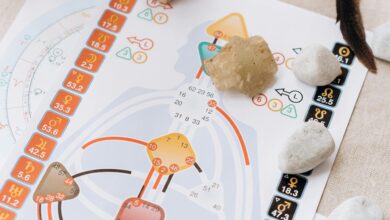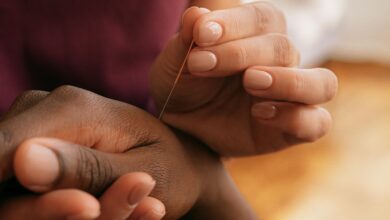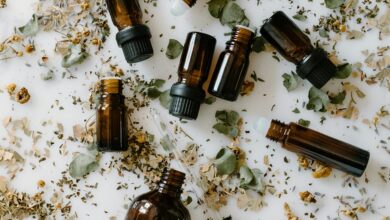How to Use Acupressure for Pain Relief: A Natural Approach to Healing

Acupressure is an ancient healing practice rooted in Traditional Chinese Medicine (TCM) that involves applying pressure to specific points on the body to relieve pain, reduce stress, and promote overall well-being. Unlike acupuncture, which uses needles, acupressure relies on manual stimulation of these points using fingers, thumbs, or specialized tools. It’s a safe, non-invasive, and cost-effective method for managing various types of pain, including headaches, muscle tension, joint discomfort, and even chronic conditions.
In this guide, we’ll explore how acupressure works, its benefits, and step-by-step instructions for using it effectively to alleviate pain.
What Is Acupressure?
Acupressure is based on the concept of Qi (pronounced “chee”) , or life energy, which flows through pathways called meridians in the body. When Qi becomes blocked or imbalanced, it can lead to physical or emotional ailments. By stimulating specific acupressure points, you can restore the flow of Qi, reduce tension, and alleviate pain.
Acupressure points, also known as acupoints , are located along these meridians. Each point corresponds to different organs, systems, or areas of the body. Applying pressure to these points can trigger the release of endorphins (natural painkillers), improve circulation, and relax muscles.
Benefits of Acupressure for Pain Relief
- Non-Invasive: No needles or medications are required.
- Accessible: Can be performed anywhere, anytime, with minimal equipment.
- Versatile: Effective for a wide range of conditions, including headaches, back pain, menstrual cramps, and arthritis.
- Holistic: Addresses not only physical symptoms but also emotional and mental health.
- Cost-Effective: Requires no special tools beyond your hands or simple devices like acupressure mats or balls.
Common Acupressure Points for Pain Relief
Here are some of the most commonly used acupressure points and their associated benefits:
1. LI4 (Hegu): Relieves Headaches and Facial Pain
- Location: On the back of the hand, between the thumb and index finger.
- How to Stimulate: Use your thumb and forefinger to apply firm pressure in a circular motion for 1–2 minutes.
- Benefits: Reduces headaches, migraines, toothaches, sinus pain, and general tension.
2. GB20 (Fengchi): Eases Neck and Shoulder Tension
- Location: At the base of the skull, in the hollows on either side of the spine.
- How to Stimulate: Place your thumbs in the hollows and press upward toward the top of your head for 1–2 minutes.
- Benefits: Relieves neck stiffness, tension headaches, and fatigue.
3. LV3 (Taichong): Alleviates Lower Back Pain and Stress
- Location: On the top of the foot, in the webbing between the big toe and second toe.
- How to Stimulate: Use your thumb to apply steady pressure for 1–2 minutes.
- Benefits: Helps with lower back pain, menstrual cramps, anxiety, and irritability.
4. ST36 (Zusanli): Boosts Energy and Relieves Joint Pain
- Location: About four finger-widths below the kneecap, one finger-width to the outside of the shinbone.
- How to Stimulate: Press firmly with your thumb or knuckles for 2–3 minutes.
- Benefits: Strengthens the immune system, reduces knee pain, and alleviates digestive issues.
5. PC6 (Neiguan): Soothes Nausea and Wrist Pain
- Location: Three finger-widths above the wrist crease on the inner forearm, between two tendons.
- How to Stimulate: Apply gentle pressure with your thumb for 1–2 minutes.
- Benefits: Relieves nausea, motion sickness, carpal tunnel syndrome, and chest tightness.
6. BL60 (Kunlun): Targets Ankle and Foot Pain
- Location: On the outer ankle, in the depression between the ankle bone and Achilles tendon.
- How to Stimulate: Use your thumb to press deeply for 1–2 minutes.
- Benefits: Reduces ankle pain, sciatica, and lower back discomfort.
Step-by-Step Guide to Using Acupressure
Step 1: Identify the Right Point
Research or consult a professional to locate the acupressure point relevant to your pain or condition. Refer to diagrams or apps for accurate placement.
Step 2: Prepare Your Environment
Find a quiet, comfortable space where you won’t be disturbed. Sit or lie down in a relaxed position.
Step 3: Apply Pressure
- Use your thumb, fingers, or a blunt object (like a pencil eraser or acupressure tool).
- Apply firm but gentle pressure in a circular or steady motion.
- Gradually increase the intensity until you feel slight discomfort—not sharp pain.
Step 4: Hold and Breathe
- Maintain pressure for 1–3 minutes per point.
- Focus on deep, slow breaths to enhance relaxation and maximize the effects.
Step 5: Repeat as Needed
You can repeat the process multiple times throughout the day, especially during flare-ups of pain or tension.
Tips for Effective Acupressure
- Be Consistent: Regular practice yields better results than occasional use.
- Use Proper Technique: Avoid pressing too hard, which can cause bruising or irritation.
- Combine with Other Therapies: Pair acupressure with stretching, yoga, or meditation for enhanced benefits.
- Stay Hydrated: Drink water after sessions to help flush out toxins released during treatment.
- Consult a Professional: If you’re new to acupressure or dealing with severe pain, consider visiting a licensed acupuncturist or therapist for guidance.
Conditions That Respond Well to Acupressure
Acupressure can provide relief for a variety of conditions, including:
- Headaches and Migraines
- Back Pain
- Joint Pain (Arthritis, Sciatica)
- Menstrual Cramps
- Nausea and Digestive Issues
- Stress and Anxiety
- Insomnia
- Muscle Tension
Precautions and Contraindications
While acupressure is generally safe, there are certain situations where caution is advised:
- Pregnancy: Avoid stimulating points like LI4, as they may induce labor.
- Open Wounds or Infections: Do not apply pressure to areas with cuts, rashes, or infections.
- Bleeding Disorders or Blood Thinners: Consult a doctor before attempting acupressure.
- Severe Medical Conditions: Seek medical advice if you have unexplained pain or underlying health issues.



